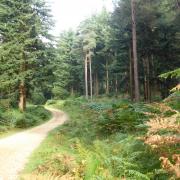Lichens and mosses are often overlooked and can be underappreciated, but they play a vital role in the wellbeing of our natural world
Take a closer look at a tree trunk, rock or twig and you can enjoy a multitude of luminous lichens in a kaleidoscope of colour and patterns. The diversity of lichens – a composite of a fungus and an alga - is huge with around 1800 species on display in the UK. These bedfellows exist in a symbiotic relationship: the fungus needs food, which the algae produce via photosynthesis, and the algae needs somewhere to shelter. Lichens do not harm the plants they grow on and can even shield their host from extreme weather. They offer many benefits including protection and a food source for insects; nourishment for species such as deer; and nesting materials for birds. Lichens are also an excellent barometer of an area’s ecological health, preferring an area with clean, unpolluted air.
The growth rate for lichens is extremely slow at a rate of only 1-2mm a year, making undisturbed sites such as ancient woodland and ageing bark particularly attractive to the species. Lichens do not have leaves or a stem, and can come in crusty, leafy, or bushy varieties displaying an amazing array of vibrant to subtle hues.


On your winter wanders, take a moment to spot luscious lichens and marvelous mosses when leaf and vegetation cover are low, and these ecological wonders take centre stage.
About the author
Carly Harrod is a Countryside Projects Manager with Hampshire Countryside Service. The service looks after many of Hampshire’s major country parks and National Nature Reserves, as well as some heritage monuments, local recreational spaces, and large areas of common land. It also manages Hampshire’s 3,000 miles of public rights of way.



























